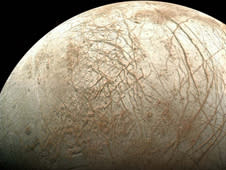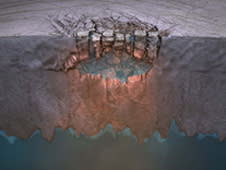 The Sideshow
The SideshowLakes found on Jupiter’s moon Europa

Does Jupiter's most famous moon house lakes of liquid water just underneath its icy shell? A new NASA analysis of that moon, which goes by the cosmopolitan name of Europa suggests that may be the case, with plumes of water rising and fracturing the shell's outer layers.
There's also a sci-fi-meets-real-life element of intrigue in the analysis. In Arthur C. Clarke's 2010: Odyssey Two, extraterrestrial life is discovered swimming beneath Europa's surface. And now the realistic possibility of liquid water brings with it the hope for life on Europa. Clarke's novel, originally published in 1982, never pretended to be calendar-based prophecy, but it's still striking that the new NASA report comes just a year after the time that Clarke selected for his well-known sequel.
On Wednesday, NASA released a computer simulation of what Europa's "Great Lake" might look like.
And here's a more extended breakdown of the implications of the potential finding, courtesy of the BBC:
The icy eddies could transfer nutrients between the surface water and the ocean's depths.
"That could make Europa and its ocean more habitable," said lead author Britney Schmidt from the University of Texas at Austin, US, who analyzed images collect by the Galileo spacecraft launched in 1989.
Glaciologists have been studying the surface of Europa for many years, trying to work out what formed its scarred, fractured surface. By looking at Antarctica, where we see similar [features] - glaciers, ice shelves - we can infer something about the processes that are happening on Europa, said glaciologist Martin Siegert from the University of Edinburgh.


